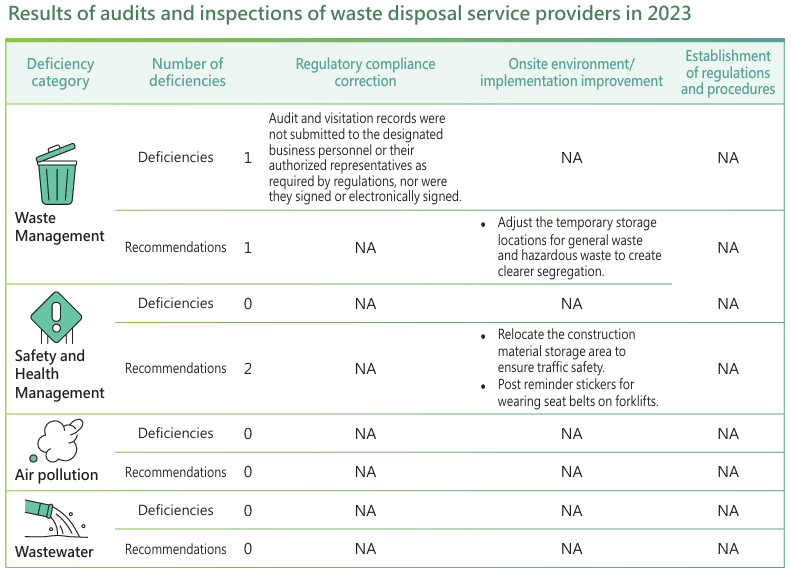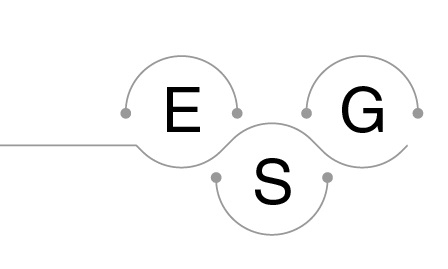5.5.1 Waste Production and Recycling
VisEra implements green manufacturing and upholds the waste management principle of "minimizing waste generation and maximizing resource circulation".
We prioritize "material recovery" and "energy recovery" over incineration and landfill to ensure maximum resource utilization. Since 2020, VisEra has experienced rapid growth in sales, production capacity, and process innovation. As a result, the consumption of various chemical raw materials, consumables, and machine line cleaning and maintenance has significantly increased. With the introduction of new materials and widespread adoption of innovative processes, VisEra has not only witnessed a substantial increase in the production of both conventional and hazardous waste but also faced constraints in waste management due to limitations in disposal technologies and environmental regulations. Consequently, the annual material recovery rate dropped from 74% to 55%.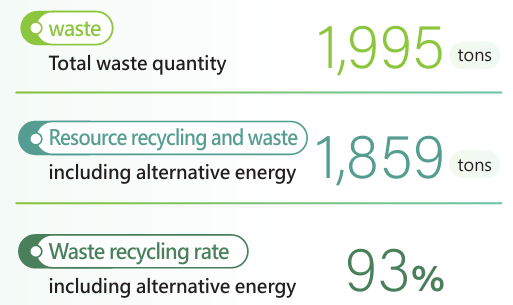
In 2021, VisEra began actively seeking alternative waste treatment facilities to replace incineration. Collaborating with the Foundation of Taiwan Industry Service, in December of the same year, VisEra partnered with a recycling company to divert and purify a portion of previously non recyclable waste, turning it into auxiliary fuel to replace conventional high-polluting fuels such as coal and natural gas. This initiative led to a material recovery rate (including alternative energy sources) of over 90% in 2022.
By 2023, the recycling and reuse rate (including alternative energy sources) had reached 1,859 tons per year, with a landfill rate of only 0.25%. Furthermore, since the establishment, VisEra has maintained a landfill rate of less than 1% for 18 consecutive years.
Full-process smart waste management rocedures
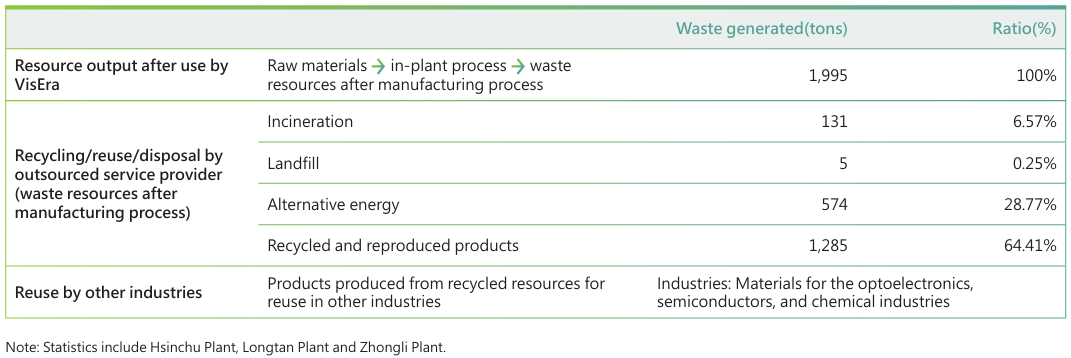
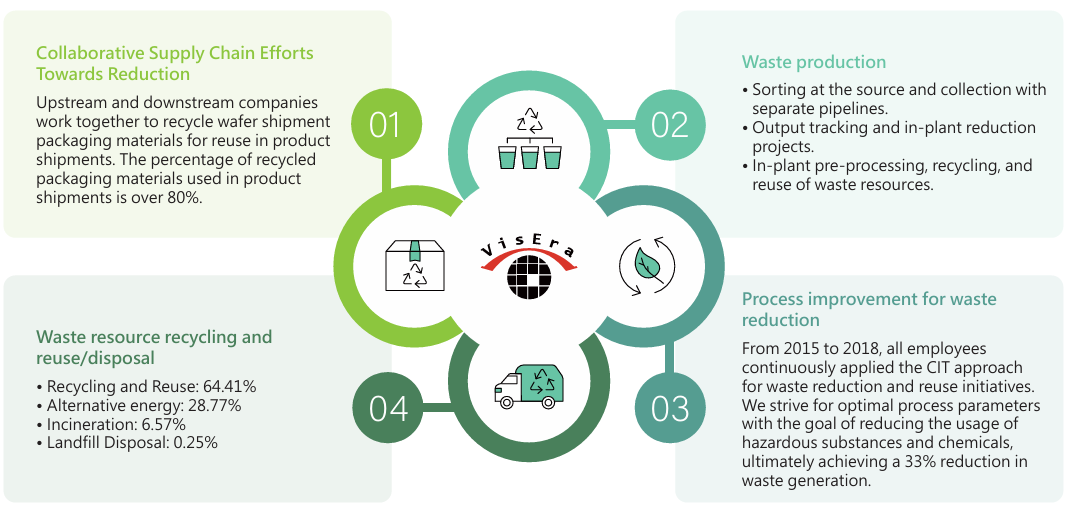
Waste production volume and processing method

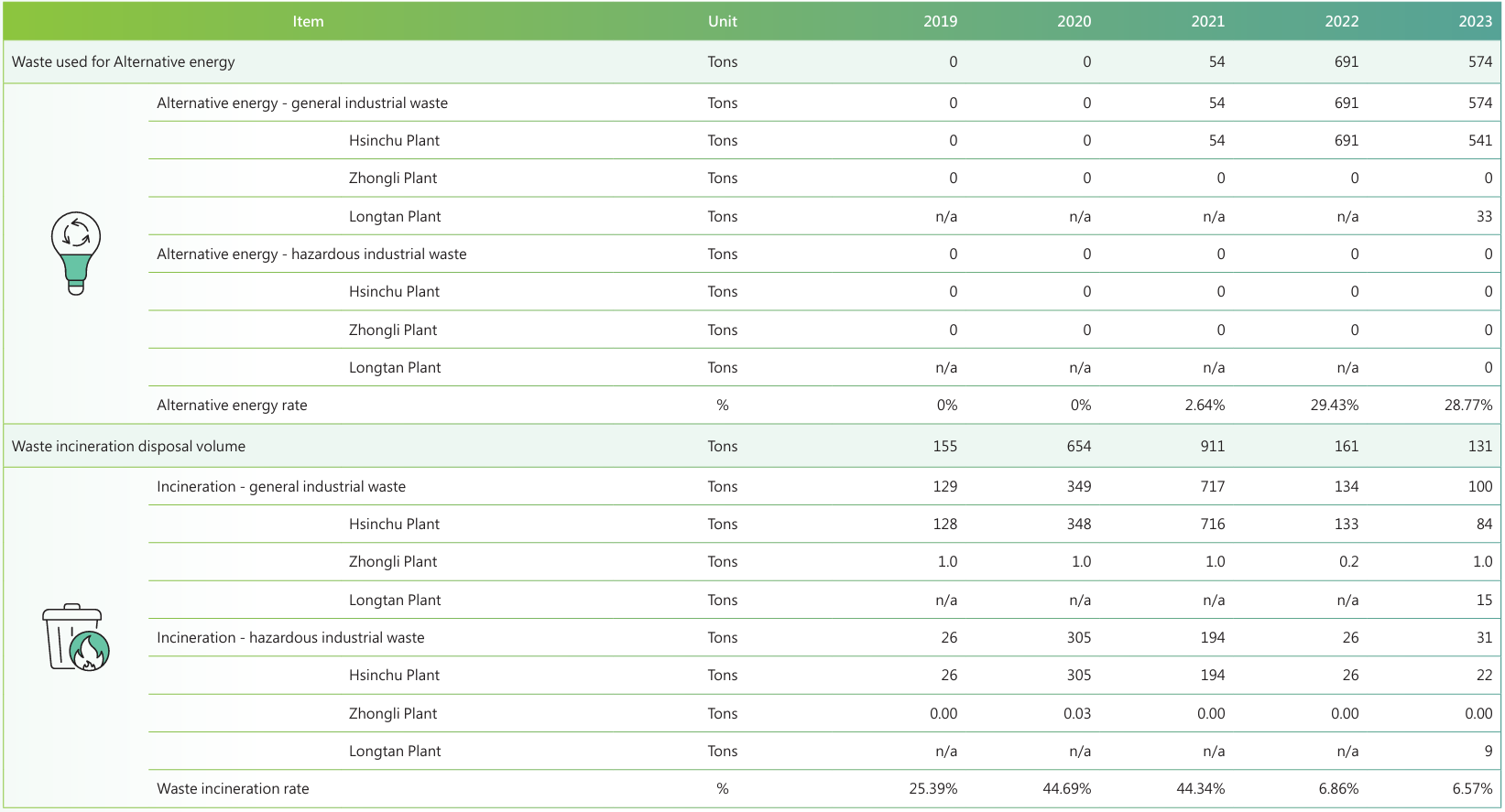
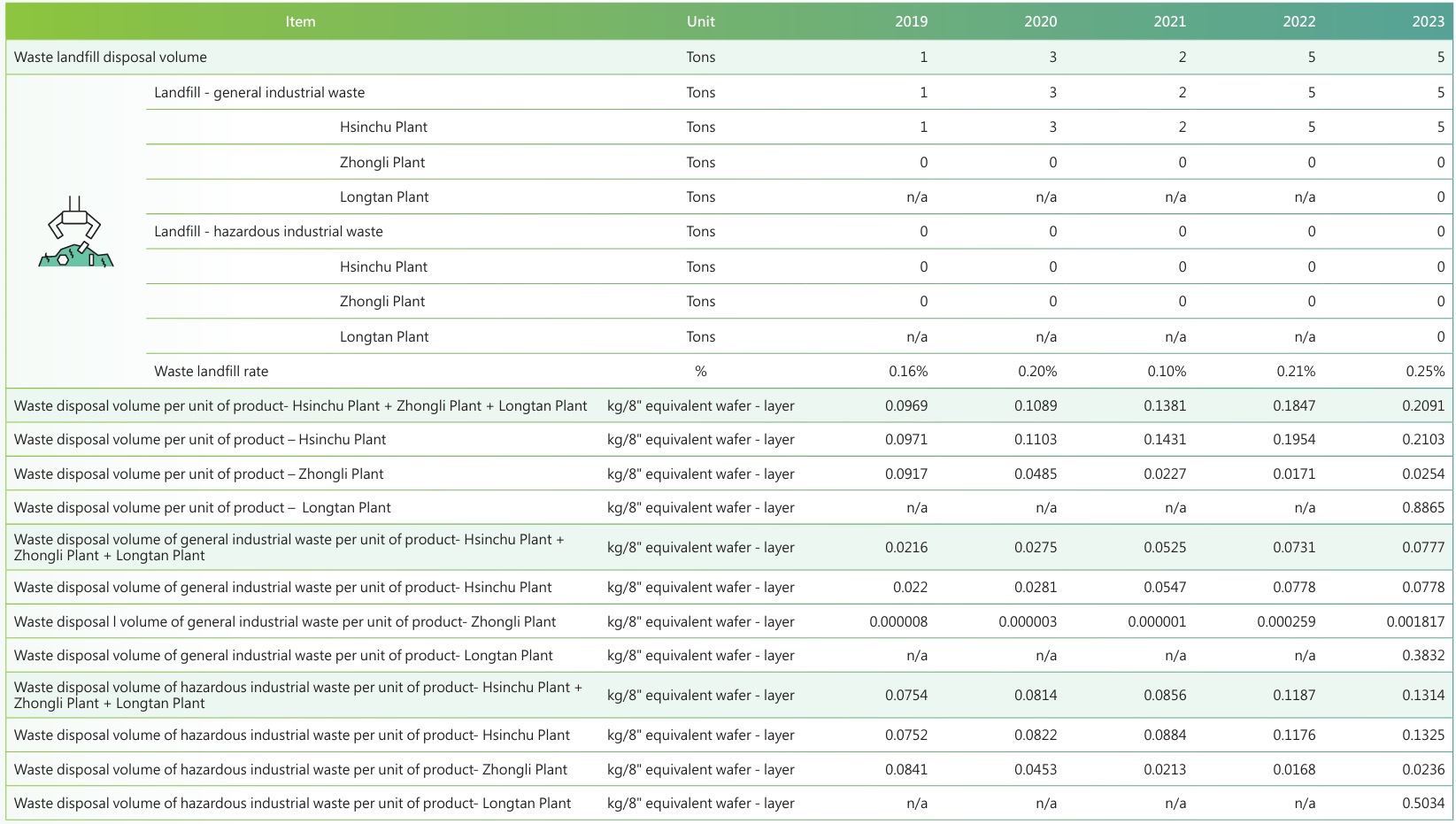
Note 1: Material recovery processing refers to any waste treatment that does not involve incineration or landfill. Waste treatment by physical, heat treatment, reuse, etc. to produce reusable materials or products are considered material recovery.
Note 2: Alternative energy refers to the use of waste materials as fuel to produce heat (generally in the form of steam), which is then used to produce electricity with a steam turbine generator. Alternative energy generates both heat and electricity. The heat in the form of steam and electricity can be supplied to companies in the industrial zone.
Total waste quantity (unit: tons)
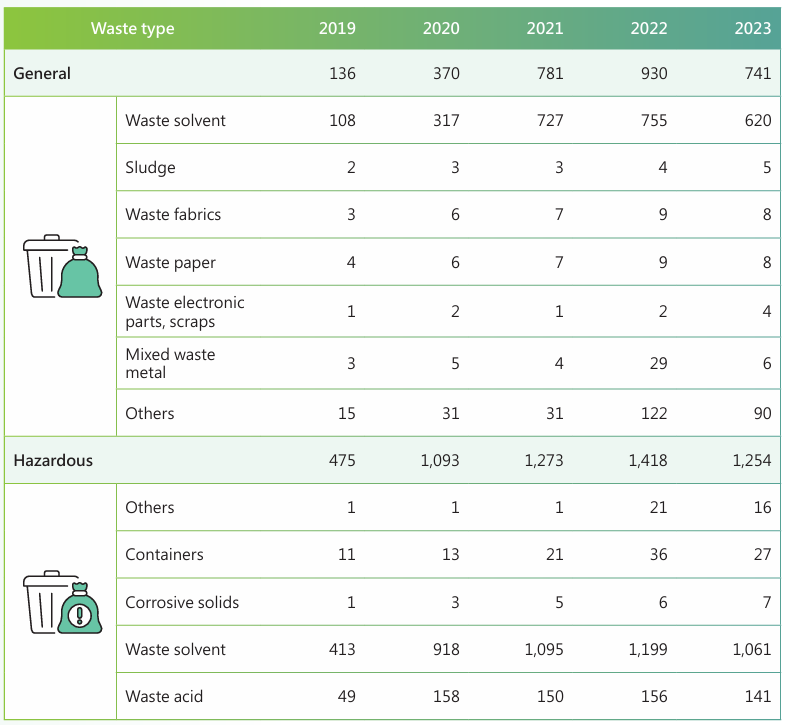
5.5.2 Circular Economy
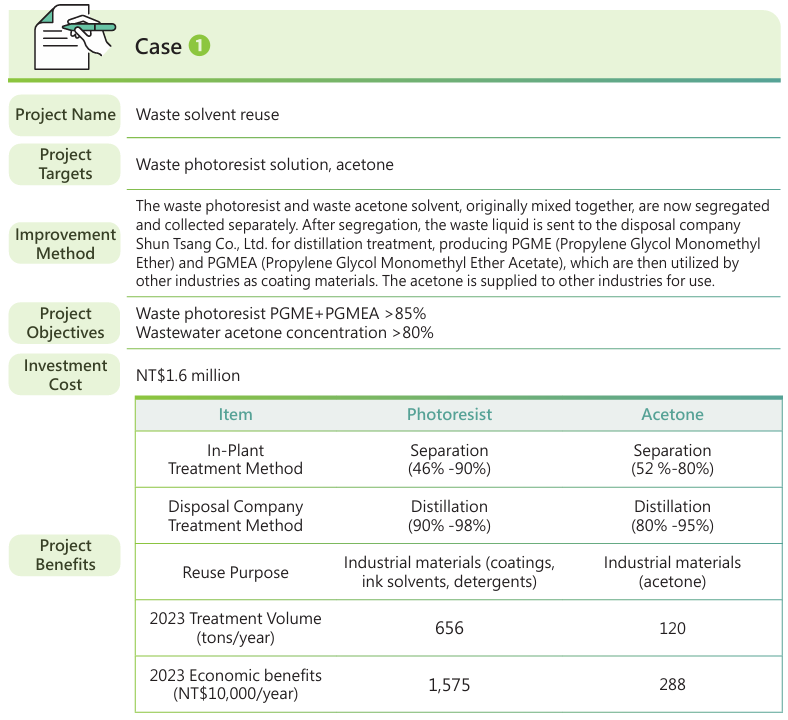

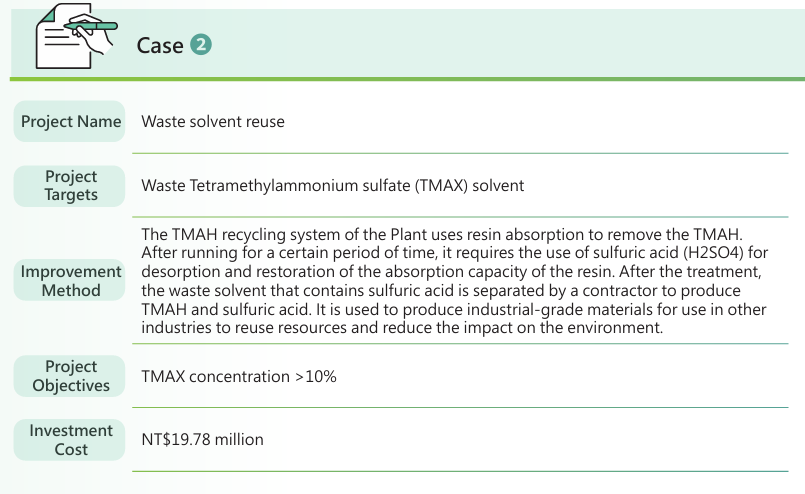
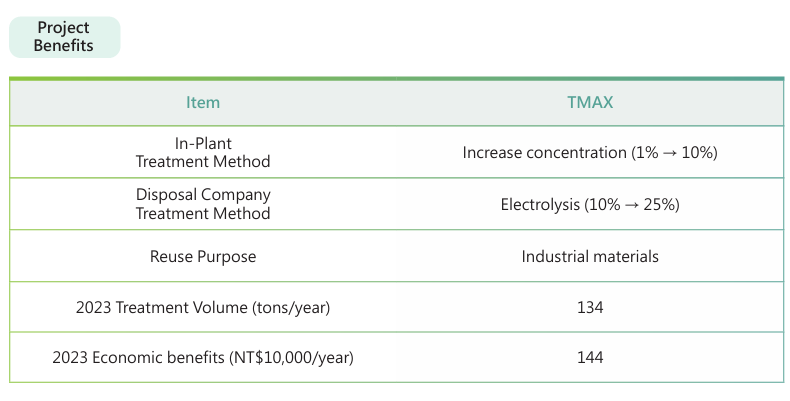

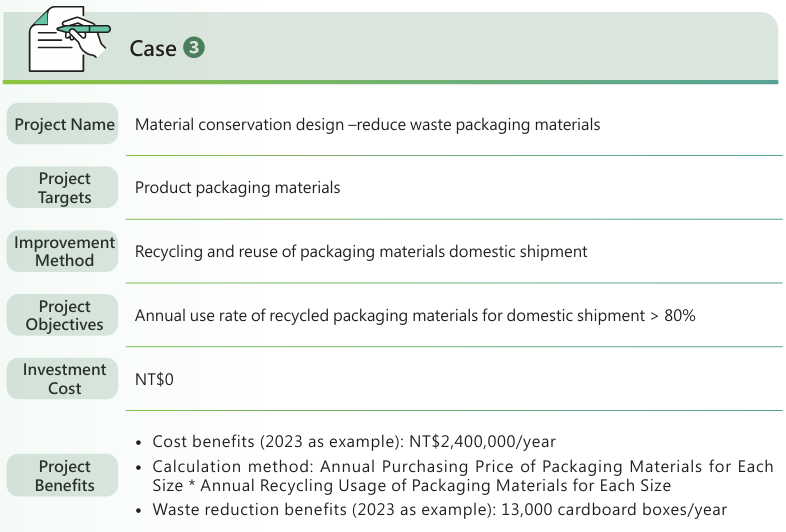



5.5.3 Waste Disposal Contractor Management
VisEra outsources all business waste through environmental agencies, with selection conducted jointly by the company's internal environmental, procurement, and waste management units based on six criteria (including scale/reputation, permit documents, violation records, on-site facilities, waste control, and safety and health). The selection process involves screening for high-quality vendors based on these criteria. Environmental unit personnel and waste management unit personnel conduct on-site visits and evaluations (utilizing eight aspects covering 166 audit items for on-site audits), with vendors needing to score over 60 points, as set by the parent company (TSMC), and gaining unanimous approval from the visiting unit personnel. Following this, vendors must undergo legal contract review, approval, and procurement procedures before being approved as waste disposal vendors for the company. Finally, the "Annual Evaluation of Waste Disposal Vendors" serves as the basis for vendor replacement assessments. Since 2018, VisEra has collaborated with TSMC to conduct visits and guidance for outsourced waste disposal vendors, addressing common regulatory audit deficiencies and penalty items, sharing internal management methods and experiences, and strengthening management processes through face-to-face communication with vendors. Additionally, we encourage vendors to disseminate this process to other clients, collectively striving for environmental sustainability.
